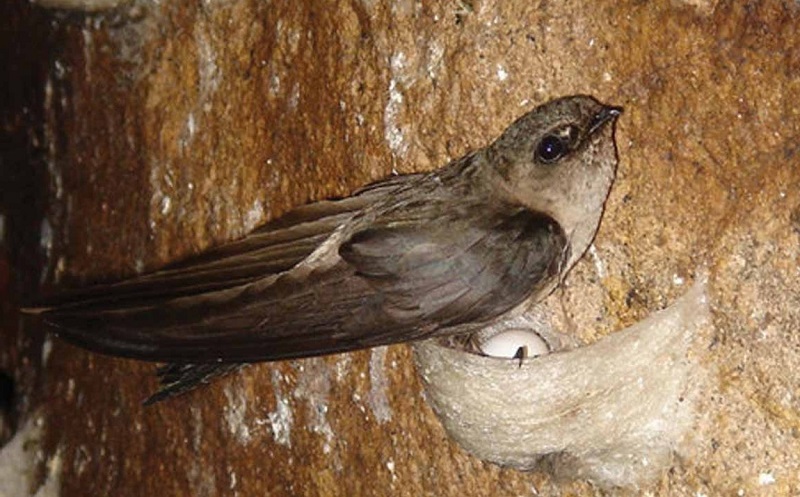News
Why does bird’s nest have high nutritional value?
**Why Does Bird’s Nest Have High Nutritional Value? An In-Depth Analysis**
(*1600 words*)
—
### **Introduction**
For centuries, edible bird’s nests, known as **燕窝 (yànwō)** in Chinese, have been highly sought after for their reputed health benefits and nutritional properties. These nests, produced by swiftlets using their saliva, are prized in Traditional Chinese Medicine (TCM) for their ability to enhance immunity, promote youthful skin, and improve overall health. However, what exactly makes bird’s nest so nutritionally valuable? In this comprehensive exploration, we will delve into the biochemical composition of bird’s nests, their health benefits, and the scientific evidence supporting their nutritional profile.
—
### **What Is Bird’s Nest?**
Bird’s nests are created by **swiftlets**, small birds native to Southeast Asia. Unlike other birds that build nests using twigs, grass, or leaves, swiftlets produce their nests almost entirely from their own **hardened saliva**. These nests, harvested mainly in countries like Indonesia, Malaysia, and Thailand, are regarded as a **luxury delicacy** in many Asian cultures.
The swiftlets use their saliva to form gelatinous nests, which are later harvested, cleaned, and processed for consumption. Bird’s nests are typically sold in dried, raw form and are rehydrated before being used in soups, desserts, or tonics.
—
### **Biochemical Composition of Bird’s Nest**
The nutritional value of bird’s nest is derived from its unique **biochemical composition**, which includes a range of **glycoproteins, amino acids, minerals, and bioactive compounds**. Let’s take a closer look at the key components:
1. **Glycoproteins**
Bird’s nest is rich in glycoproteins, which are molecules made of protein and carbohydrates. These glycoproteins are responsible for the nest’s **gelatinous texture** and are believed to have immune-boosting and anti-inflammatory properties. One of the key glycoproteins found in bird’s nest is the **epidermal growth factor (EGF)**, which plays a crucial role in stimulating cell growth and repair.
2. **Amino Acids**
Bird’s nest contains a variety of **essential amino acids** that the human body cannot produce on its own. These include **lysine, glycine, glutamic acid, proline**, and **serine**, all of which contribute to muscle repair, immune function, and skin health. Amino acids like **serine** and **threonine** are also essential for collagen synthesis, which helps maintain youthful, elastic skin.
3. **Collagen**
While bird’s nest does not contain collagen in the same form found in animal products, its high glycoprotein content is thought to stimulate the body’s own production of collagen. This is why bird’s nest is often associated with **anti-aging** benefits, as increased collagen levels can reduce wrinkles and promote skin elasticity.
4. **Sialic Acid**
Sialic acid is a naturally occurring compound found in bird’s nests that is crucial for **brain development and cognitive function**. Studies have shown that sialic acid plays a vital role in **neural transmission and memory formation**, making it particularly beneficial for infants and the elderly.
5. **Minerals**
Bird’s nest is a rich source of essential minerals, including **calcium, potassium, iron, and magnesium**. These minerals support various bodily functions, such as bone health, muscle contraction, oxygen transport, and enzyme activation.
6. **Antioxidants**
Some studies suggest that bird’s nest contains **antioxidant compounds** that help combat oxidative stress, which is linked to aging and chronic diseases. Antioxidants protect cells from damage caused by free radicals, promoting overall health and well-being.
Illustration Idea: A detailed diagram highlighting the biochemical components of bird’s nest, such as glycoproteins, amino acids, and minerals.
—
### **Health Benefits of Bird’s Nest**
Bird’s nest has been used for centuries in TCM due to its perceived health benefits. Here’s a breakdown of some of the most significant benefits supported by both traditional beliefs and modern science:
1. **Boosting the Immune System**
The glycoproteins and amino acids in bird’s nest are believed to **strengthen the immune system**. By enhancing the body’s natural defense mechanisms, bird’s nest helps protect against infections and promotes faster recovery from illnesses.
2. **Improving Skin Health and Anti-Aging**
Bird’s nest is often referred to as a natural **beauty elixir** due to its high glycoprotein content, which can stimulate collagen production. Regular consumption of bird’s nest is said to result in smoother, more youthful skin. The presence of sialic acid further aids in **skin regeneration** and repair.
3. **Enhancing Brain Function**
The sialic acid found in bird’s nest is vital for **neural development and cognitive function**. It is particularly beneficial for infants, as it aids in brain development, and for the elderly, as it may help reduce the risk of age-related cognitive decline.
4. **Supporting Respiratory Health**
In TCM, bird’s nest has long been used to treat respiratory ailments like **asthma, chronic coughs**, and bronchitis. Its soothing properties are thought to alleviate inflammation in the respiratory tract, making it easier to breathe.
5. **Promoting Gut Health**
Bird’s nest contains bioactive compounds that can **promote healthy gut flora**, improving digestion and nutrient absorption. The glycoproteins may also act as prebiotics, providing nourishment for beneficial gut bacteria.
6. **Aiding Postpartum Recovery**
In Chinese culture, bird’s nest is traditionally given to new mothers to aid in **postpartum recovery**. The rich nutrient content helps replenish lost nutrients, supports tissue repair, and boosts overall vitality.
Illustration Idea: A series of icons depicting the health benefits of bird’s nest, such as a shield for immunity, a brain for cognitive function, and lungs for respiratory health.
—
### **Scientific Evidence Supporting Bird’s Nest Health Benefits**
While bird’s nest has been revered for centuries in traditional medicine, modern scientific research has begun to validate some of its purported benefits. Here are a few examples:
1. **Immune Modulation**
A study published in the *Journal of Ethnopharmacology* found that bird’s nest extracts could enhance the immune response by stimulating the production of **white blood cells**. This supports the traditional belief that bird’s nest can boost immunity.
2. **Skin Regeneration**
Research conducted by *Biochemical and Biophysical Research Communications* showed that the glycoproteins in bird’s nest could promote **cell proliferation and wound healing**, which may explain its anti-aging effects.
3. **Brain Development**
Studies have demonstrated that sialic acid plays a crucial role in the **development of brain cells** and the transmission of neural signals. This makes bird’s nest particularly beneficial for children and the elderly, supporting both early development and cognitive longevity.
Illustration Idea: Scientific diagrams showing the impact of bird’s nest compounds on immune cells, skin cells, and neurons.
—
### **How to Consume Bird’s Nest for Maximum Nutritional Benefits**
To fully benefit from the nutritional properties of bird’s nest, it is important to prepare it correctly. Here are a few tips:
1. **Soaking and Cleaning**
Dried bird’s nests should be **soaked in water for several hours** to rehydrate them. After soaking, gently clean the nests to remove any impurities.
2. **Cooking Methods**
The most common way to consume bird’s nest is by making a **sweet soup** with rock sugar. However, bird’s nest can also be added to **desserts, smoothies**, or even savory dishes.
3. **Dosage and Frequency**
Consuming bird’s nest **2-3 times a week** is recommended for optimal health benefits. A portion size of **3-5 grams per serving** is generally considered sufficient.
Illustration Idea: Step-by-step guide on how to prepare and cook bird’s nest, with visuals showing the soaking, cleaning, and cooking process.
—
### **Sustainability and Ethical Considerations**
As demand for bird’s nest continues to grow, concerns about **overharvesting and sustainability** have emerged. Ethical farming practices are essential to ensure that the swiftlet populations are not endangered. Sustainable farms provide swiftlets with safe environments to build their nests, allowing for controlled harvesting after the chicks have fledged.
Governments in major bird’s nest producing countries, like Indonesia and Malaysia, have introduced **regulations** to protect swiftlet populations and ensure sustainable harvesting practices.
Illustration Idea: A comparison between sustainable swiftlet farms and traditional cave harvesting, emphasizing the importance of ethical practices.
—
### **Conclusion**
The high nutritional value of bird’s nest is derived from its rich content of glycoproteins, amino acids, sialic acid, and essential minerals. Whether used to boost immunity, improve skin health, or enhance brain function, bird’s nest has been treasured for its health benefits for centuries. As modern science continues to validate its traditional uses, bird’s nest remains a valuable natural supplement in both ancient and contemporary wellness practices.
However, it is crucial to balance the benefits of bird’s nest consumption with sustainable practices to protect the swiftlets and their habitats. By supporting ethically sourced bird’s nests, consumers can continue to enjoy this delicacy while preserving its availability for future generations.
—
Would you like illustrations generated to complement this content? I can provide visuals that align with each section for a comprehensive and engaging read.

